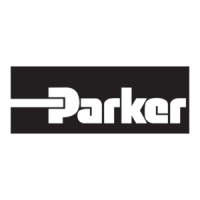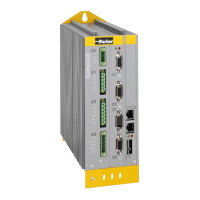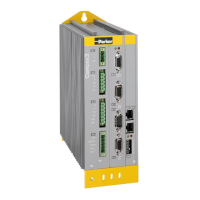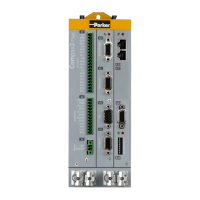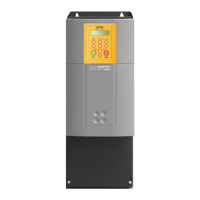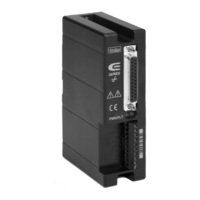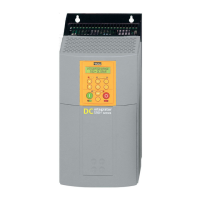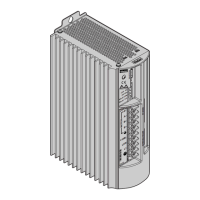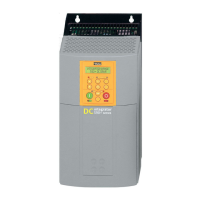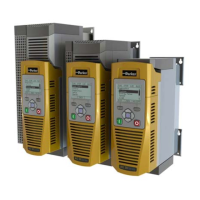Parker EME
Setting up Compax3
192-120114 N5 C3I22T11 June 2008 223
Effect of the notch filter
Resonance Notch filter Result
As can be seen in the figure, the notch filter is only useful in cases where the set
frequency of the notch filter is exacly the same as the disturbing frequency. The
notch filter as well as the resonance point are very narrowband. If the resonance
point does only minimally change (e.g. by changing the masses involved), it is not
sufficiently activated by the notch filter.
Wrongly set notch filter
In the Compax3, two notch filters which are independent of each other are imple-
mented.
Frequency response of the notch filter.
Center frequency = 500Hz
Bandwitdh = 50Hz
Depth = 0.99 (-40dB)
Parameterization by 3 objects.
In this chapter you can read about:
Frequency filter 1 (O2150.1) / frequency filter 2 (O2150.4)............................................. 223
Bandwidth filter 1 (O2150.2) / ban
dwidth filter 2 (O2150.5)............................................. 224
Depth filter 1 (O2150.3) / de
pth filter 2 (O2150.6) ........................................................... 224
Frequency filter 1 (O2150.1) / frequency filter 2 (O2150.4)
This defines the frequency at which the notch filter attenuation is highest. In practi-
ce it shows that notch filters can only sensibly be used if the distance between the
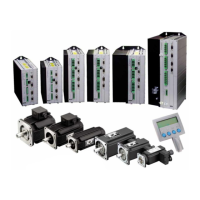
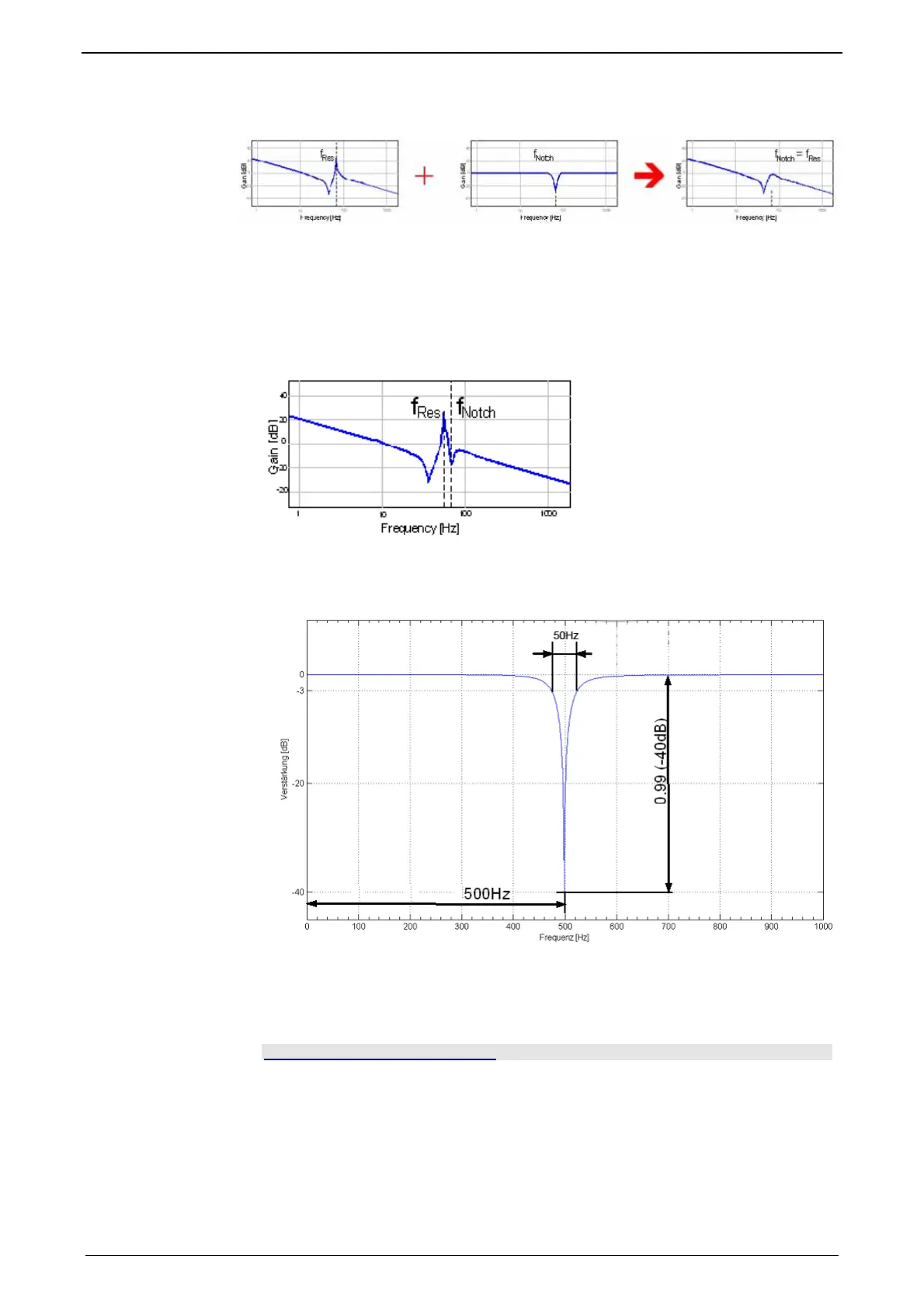